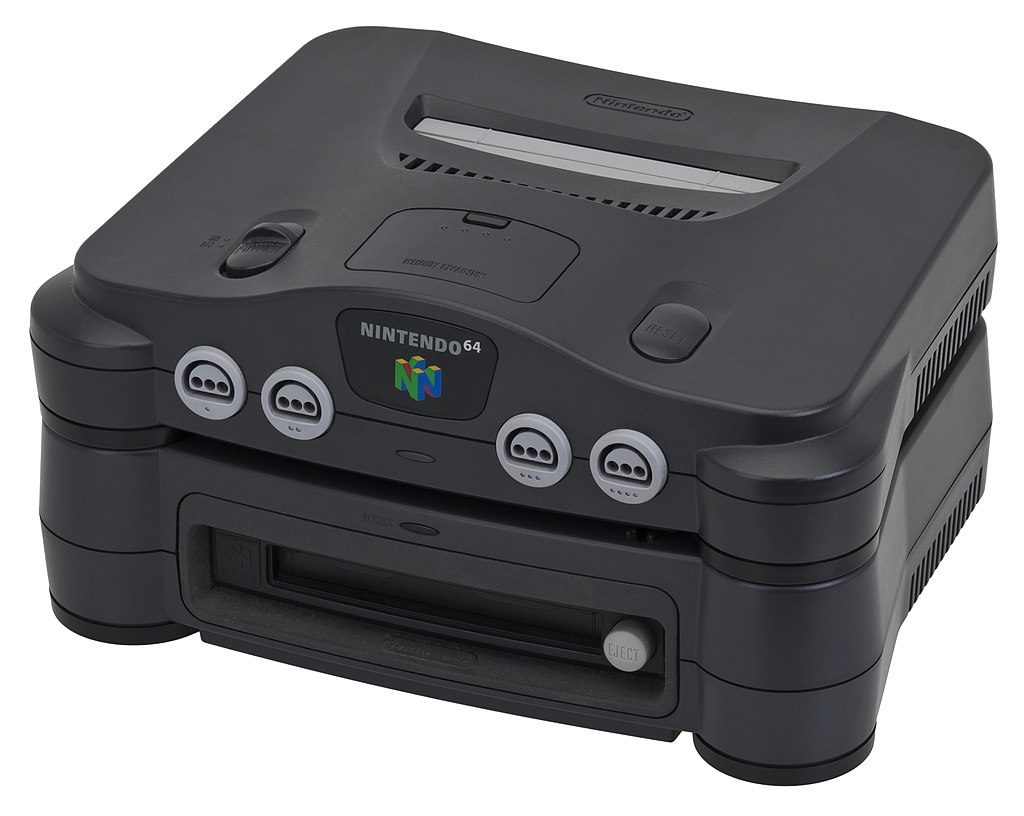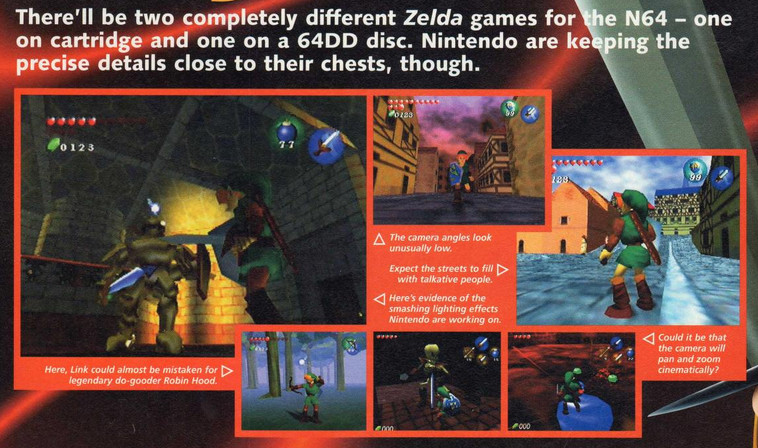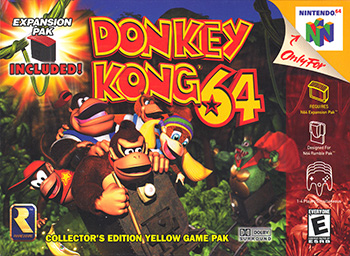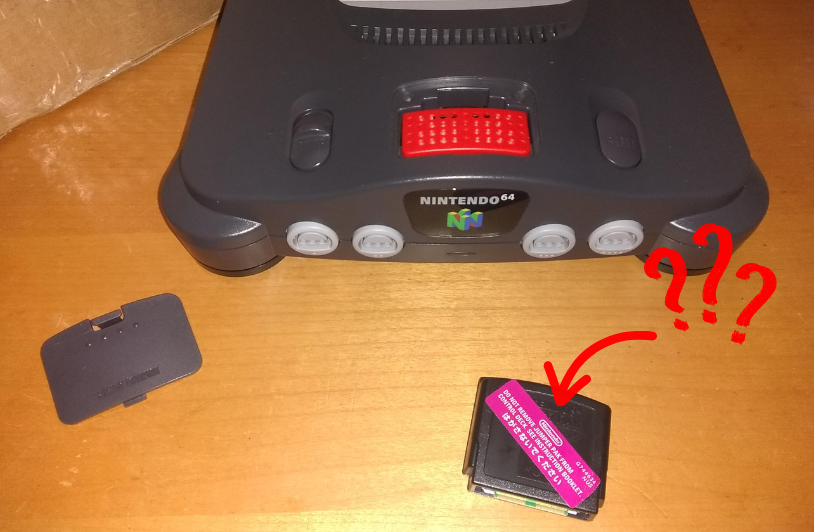For fans of the Nintendo 64, there was a mysterious accessory released by Nintendo that vaguely promised features like “unreal graphic rendering” and “fully immersive environments” that were only possible with the small add-on. Marketing speak aside, what exactly was the “Nintendo 64 Expansion Pak” and what did it actually do?

A Mysterious Cartridge
When people brought home their Nintendo 64’s in 1996, many noticed an unusual feature that wasn’t part of any previous console generations. Underneath an easily removable cover on the front of the console was a mysterious black cartridge, adorned with a “DO NOT REMOVE” sticker and of course, when removed, would cause the console to not load any game. This piece of hardware was essentially nothing, and contained no unique chipsets, but a physical pin within the housing would detect its presence and would only launch games if the cartridge was inserted.

Designing the N64 Around Super Mario 64
Rewinding back to the development of the Nintendo 64, Nintendo knew they had a computational powerhouse on their hands. The base N64 was by far the most powerful console ever created in terms of raw computing power but all that power came at a cost. To keep the console reasonably affordable, Nintendo knew they had to cut back on features. At the time, Super Mario 64 was in development, and the entire console centered around this one title, perceived internally as possibly the greatest game that had ever been created. The hardware requirements were molded around Super Mario 64, rather than the other way around, and as the Mario developers discarded ideas such as a real time clock, multiplayer, and sharable screenshots, the hardware developers began to take note of just how much they could scale back the hardware power of the Nintendo 64 therefore reducing cost. The issue was, several in development games, including “The Legend of Zelda: Ocarina of Time”, “Earth Bound 64”, and “Mario Paint 64”, all made use of these features.
Nintendo’s Big Hardware Gamble
Around this time, Sega had tried (and failed) to create console add-ons such as the Sega CD or Sega 32x that would extend the lifespan of the Sega Genesis. Nintendo itself had even attempted an add-on device for the SNES, the SNES CD, developed by Sony. That partnership infamously fell through, leading to the development of the Sony PlayStation. But Nintendo’s takeaway from the experience was that console add-ons were great, so long as the console was designed for it to begin with.
Nintendo was dealing with another blowback around this time. Developers that were stalwart contributors to the SNES ecosystem, like Squaresoft, were bullish on the N64s insistence on using game cartridges with a paltry 64mb of storage space rather than adopting CD-ROM as the new standard. The in-development mega hit, Final Fantasy VII, was simply not possible on the Nintendo 64, leading Squaresoft to part ways with long time ally Nintendo for the Sony PlayStation.
NIntendo knew they needed to support disk based games, and they also needed to support the hardware features that would be needed by some of their biggest in development games, especially Zelda 64 which was also internally perceived as an absolute system seller of a game. Plans were drafted up for smaller, incremental hardware upgrades to the base Nintendo 64 that would allow the system to keep up with demands of emerging technology. Things like a network adapter that slotted into the bottom of the console, a hard drive that could hold larger amounts of read/write data, game carts that added more ram to the system, and most importantly, a disk drive, then called the Nintendo 64 Disk Drive.

Zelda 64 and the Fall of the 64DD
Nintendo, worried that customers would be confused by having multiple add-ons to purchase, began to migrate all their ideas into one console accessory, the N64 DD. This accessory was considered critical to the long term success of the console, giving players and developers the best of both worlds with the fast loading times of cartridge based games but with the data storage of CD-ROM based games, as well as features like additional RAM and ethernet ports. So important to the console’s success was the DD, that Nintendo even began marketing it before the actual N64 console launched, with its flagship game being “Zelda 64”. The DD console would also be boosted by an additional 4mb of ram, added via the “expansion slot” on the front of the system.

The Nintendo 64 launch was a mixed bag for Nintendo. While initial sales were strong, bolstered by the must have title “Super Mario 64”, Nintendo struggled to attract software developers and 3rd parties. They themselves struggled to release games in a timely fashion, owing to the complications of developers having to now learn to create 3D games. Hardware sales began to soften. Meanwhile, development costs for Zelda 64 began reaching astronomical levels, and the game soon became the most expensive game ever developed at the time. Nintendo could not afford this risky bet, and needed the game to sell to the largest audience possible.
Nintendo ordered its developers to begin scaling back Zelda, reducing the complexity of its night and day cycles, and removing features like instantaneously switching from young Link to Adult Link. Zelda 64 was to launch as a title on the base N64, with a “special edition” available exclusively on the still in development 64DD. Other DD titles, such as EarthBound 64, were outright canceled as Nintendo now expected the add-on to flop. Despite these warning signs, the add-on did launch in Japan only, with limited software support. The console sold miserably in its homeland, leading to international releases to be canceled shortly after.

Rareware and Zelda Force Nintendo’s Hand
While most N64 games in development that took advantage of the DD were either canceled or de-scoped to fit within the constraints of a base Nintendo 64, one technical additional that was absolutely unavoidable was the RAM increase afforded by the DD, increasing the N64’s small 4mb of RAM and doubling it to 8mb. More than any other feature, this RAM increase allowed developers to create games that were simply not possible on the base N64.
The “special edition” of Zelda 64 underwent many changes in development, eventually becoming the title we know as “The Legend of Zelda: Majora’s Mask”. Created in just under a year and reusing many of the assets from the first N64 Zelda game, Majora’s Mask was mostly created in desperation, as Nintendo sought to recoup development funds of the costly Ocarina of Time. At the same time, Nintendo was fielding complaints from one of its most dependable developers, Rareware Inc. creators of titles such as Banjo + Kazooie and GoldenEye, that the limitations of the consoles RAM were forcing them to reduce features on upcoming games like Perfect Dark and Donkey Kong 64.
To accommodate this, Nintendo leaned back on one of the N64’s core promises, easily expandable hardware, specifically its “add-on” port on the front of the system. Using this, the console could easily add additional ram via an accessory. Nintendo needed a trojan horse to get the accessory into the hands of gamers who might be wary of spending more on the aging console, and luckily, found one in Rareware’s “Donkey Kong 64”.

Donkey Kong 64 was actually developed to run on base N64 hardware. But during the tailend of development, Rareware discovered a serious memory leak issue that would cause the game to crash after about two hours of playing as the system quickly expended its small amount of RAM. Fixing the issue properly would be time consuming, and the game was expected to be Nintendo’s big holiday season game so a delay would have cost both the developer and publisher dearly. Instead, Nintendo pitched the idea of requiring a new RAM cart accessory that doubled the amount of usable RAM, meaning the memory leak would essentially be a non-issue as the game now had double the memory to work with. Nintendo marketing would sell the accessory as a “must have” addition that allowed developers to create fully immersive worlds not possible on the base hardware.
Donkey Kong 64 bundled with the “expansion pak” accessory sold extremely well over the holiday season. Now that the memory expansion had a trojan horse into gamers consoles with Donkey Kong, Nintendo felt comfortable releasing their next big title “The Legend of Zelda: Majora’s Mask” as requiring the accessory. However, at this point, marketing was beginning to kick in for upcoming hardware releases, such as the PlayStation 2 and Sega Dreamcast, and despite the added RAM, N64 games were looking extremely dated.

Despite this, a few titles required the expansion pak for full functionality. Besides Majora’s Mask, Blizzard’s StarCraft 64 required the add-on to unlock the full single-player campaign, and Rareware’s Perfect Dark also required it to unlock the single-player mode of the game. Other titles had marginal improvements if the add-on was installed, such as Star War: Rogue Squadron, which increased the games resolution, or various EA sports games which offered marginally reduced loadtimes.
What the Expansion Pak Really Did (and Didn’t Do)
It wasn’t until years later in which interviews with Rareware developers revealed the truth of the matter, the Nintendo 64 Expansion Pak simply didn’t really do that much, and developers never took advantage of it because most N64 gamers didn’t have it. Despite being beloved by gamers, both Zelda: Majora’s Mask and Perfect Dark were commercial failures, victims of a split userbase of fans who may not have had a costly add-on for their console.

